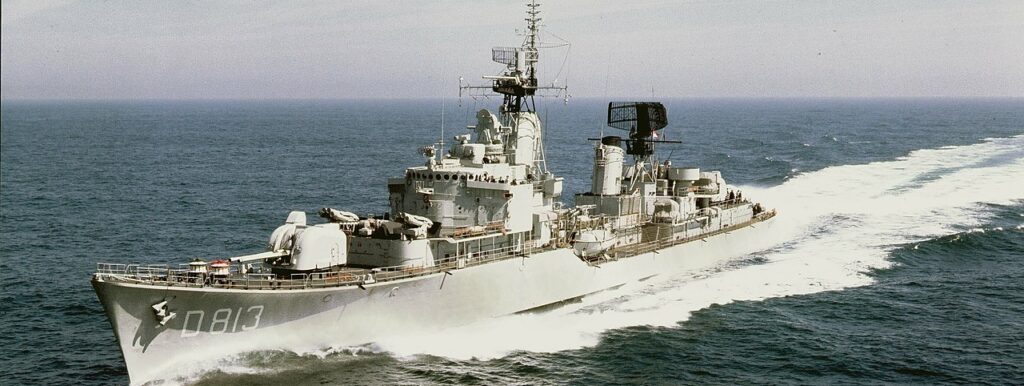
 Koninklijke Marine Destroyers: Onderzeebootjager Typ 47B (later Typ 49), Built 1951-56.
Koninklijke Marine Destroyers: Onderzeebootjager Typ 47B (later Typ 49), Built 1951-56.HNLMS Friesland, Groningen, Limburg, Overijssel, Drenthe, Utrecht, Rotterdam, Amsterdam (D812-819) service 1956-82
 BAP Gálvez, Capitan Quiñones, Colonel Bolognesi, Guise, Castilla, Diez Canseco, Villar 1980-91
BAP Gálvez, Capitan Quiñones, Colonel Bolognesi, Guise, Castilla, Diez Canseco, Villar 1980-91
The Typ 47B Onderzeebootjager of the Friesland class as they were known inside NATO were a second generation postwar Dutch destroyers. They were still focused on ASW warfare, but improved on the Holland class design, with brand new machinery identical to that used in the American Gearing-class destroyers, manufactured under licence by Werkspoor. They also came with the same main armament was supplied by Bofors and radars manufactured by Hollandse Signaalapparaten. HNLMS Friesland, Groningen, Limburg, Overijssel, Drenthe, Utrecht, Rotterdam, Amsterdam (D812-819) were in service from 1956 to 1982 until replaced by the Kortenaer-class frigates in the early 1980s, and all but one resold to the Peruvian Navy, seeing service for another decade until the end of the cold war in 1991. #netherlands #coldwar #destroyers #fiesland #groningen #limburg #destroyer #Onderzeebootjager #antisubmarinewarfare #nato
Development
The Royal Netherlands Navy emerged from WW2 with a crippled navy reinforced by former ships of the Royal Navy for its post-war recovery, and its remaining light cruisers HNLMS Tromp and Jacob van Heemskerck whereas, the new De Ruyter class AA destroyers were to be completed. The naval staff reunited at The Hague in 1945 to discuss how to rebuilding the Royal Netherlands Navy and what directions taking in this uncertain era before the cold war and NATO. The NL still had a colonial Empire like other European powers as well. The naval staff, composed of WW2 veterans tried to establish realistic plans for a future navy on a budget, and prioritize classes. The Dutch East Indies stayed a priority but also rebuilding devastated infrastructure, the basis for any realistic plan.
In 1946 already preparatory work around the completion of the new De Ruyter class cruisers and early discussions about acquiring an aircraft carrier from the British government, urged the construction of a new generation of destroyers, since all the navy possessed at the time were now obsolete Admiralen and Tjerk Hiddes classes. Also, the Navy chosed to concentrate on Anti-Submarine Warfare for these new ships, going in so far as calling “anti-submarine vessels”, not destroyers.
Dutch naval experts assured such ASW focused ships wouls be instrumental in any future war, and from 1947 the Soviet threat, especially its new generations of submarines, further fuelled these views. The Netherlands Navy took an important part in convoys in the Atlantic and all were aware of the instrumental, even existential impact submarine warfare had. The Netherlands at the time had vulnerable ties with the east Indies just as Britain had. So the Dutch experts attached to the navakl staff specific a set of pre-requisites for new ASW destroyer and recommended equipements and the tactics associated, which umtimately resulted in a first generation postwar Dutch destroyers, the “1947-class destroyers“. Later were added the need for NBC protection and ability to perform shore bombardments if needed. Air cover would be split between the new AA cruisers and future carrier’s air group in an integrated maneer. Surface combat was also no longer required for these new destroyers as well for the same reasons. This absolute focus on ASW would simplify and make the design less costly as it was hoped for.
The Onderzeebootjager Typ 49 and 1949 plan
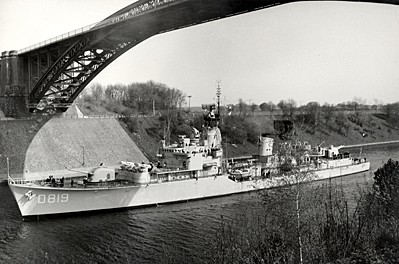 In 1948, it was decided to order the first six of twelve planned destroyers as per the “onderzeebootjager Typ 47A” or “sub-hunters” and like the next class, they would have twin dual purpose turrets, ASW rocket launchers, sophisticated radars and sonars and to keep stability, aluminium for their superstructures, plus an extensive NBC system with sealing, air conditioning, and external washing hose system. For the next batches, in principle six ships, later ported to eight and called Type 49, it was expected to design modified version of the Holland class caracterized by a more modern and powerful machinery. Indeed, the Type 47A was very much seen as an “interim class” fitted to gain time with an already existing machinery planned for unbuilt prewar destroyers, but the new Typ 49 needed a brand new machinery. So the Netherlands turned to the US after seeing the excellent, recent machinery developed for the Gearing class. An agreement was passed for the delivery of a complete set to be re-assembled then reproduced under licence by Werkspoor.
In 1948, it was decided to order the first six of twelve planned destroyers as per the “onderzeebootjager Typ 47A” or “sub-hunters” and like the next class, they would have twin dual purpose turrets, ASW rocket launchers, sophisticated radars and sonars and to keep stability, aluminium for their superstructures, plus an extensive NBC system with sealing, air conditioning, and external washing hose system. For the next batches, in principle six ships, later ported to eight and called Type 49, it was expected to design modified version of the Holland class caracterized by a more modern and powerful machinery. Indeed, the Type 47A was very much seen as an “interim class” fitted to gain time with an already existing machinery planned for unbuilt prewar destroyers, but the new Typ 49 needed a brand new machinery. So the Netherlands turned to the US after seeing the excellent, recent machinery developed for the Gearing class. An agreement was passed for the delivery of a complete set to be re-assembled then reproduced under licence by Werkspoor.
Of course the final number of destroyer built was a shadow of the initial plans for no less than 48 submarine destroyers. It was of course scaled back due to budget restrictions FY1947 and six of the “Submarine Destroyer 1947” were ordered in 1948, only four built, while it was announced that the Dutch navy would started another eight submarine destroyers. By September 1948 the new improved design based on the Holland-class destroyers and called “Submarine Destroyer 1949” became the Friesland-class destroyer, with blueprints prepared and delivered by the same team under chief engineer K. de Munter, at the Bureau Scheepsbouw in The Hague, under the Dutch Ministry of the Navy.
Construction of the Friesland class
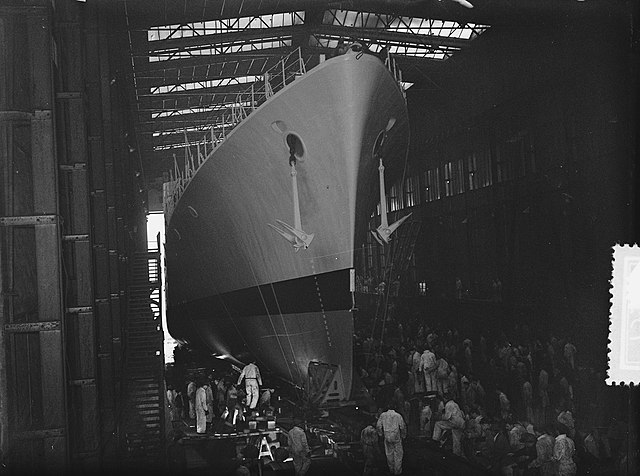
Launch of HrMs Rotterdam at the name sake yard.
The eight Friesland-class destroyers would be ordered to four different shipyards, most of which already worked on the Holland class. This ibcrease in capacity also reflected on the just rebuilt capabilities of these yards, devastated in WW2.
-NDSM, Amsterdam: Friesland, Groningen, Drenthe, Amsterdam.
-KM de Schelde, Vlissingen: Limburg, Utrecht
-RDM, Rotterdam: Rotterdam
-Wilton-Fijenoord, Schiedam: Overijssel.
Construction was quicker than the previous Holland class, as some experience already had been regained, both in design and construction processes, and a full reorganization of the industrial network necessary to feed the Yards. Part of the R&D needed also had been made already for the Holland and could be exploited, the only major difference being in the proper construction of brand new powerplant units, which represented a leap forward in technology and output. The blueprints were approved in 1950, materials gathered and setup of the construction of aluminium structures was done, with large part of the Holland class once again retook and seldom improved for the Friesland class. Radars and sonars were about the same initially and posed their own sets of challenges. The only brake to a timely delivery was an always shaking budget situation due to numerous competing costs and priorities.
Design of the Onderzeebootjager Typ 49
Hull and general design
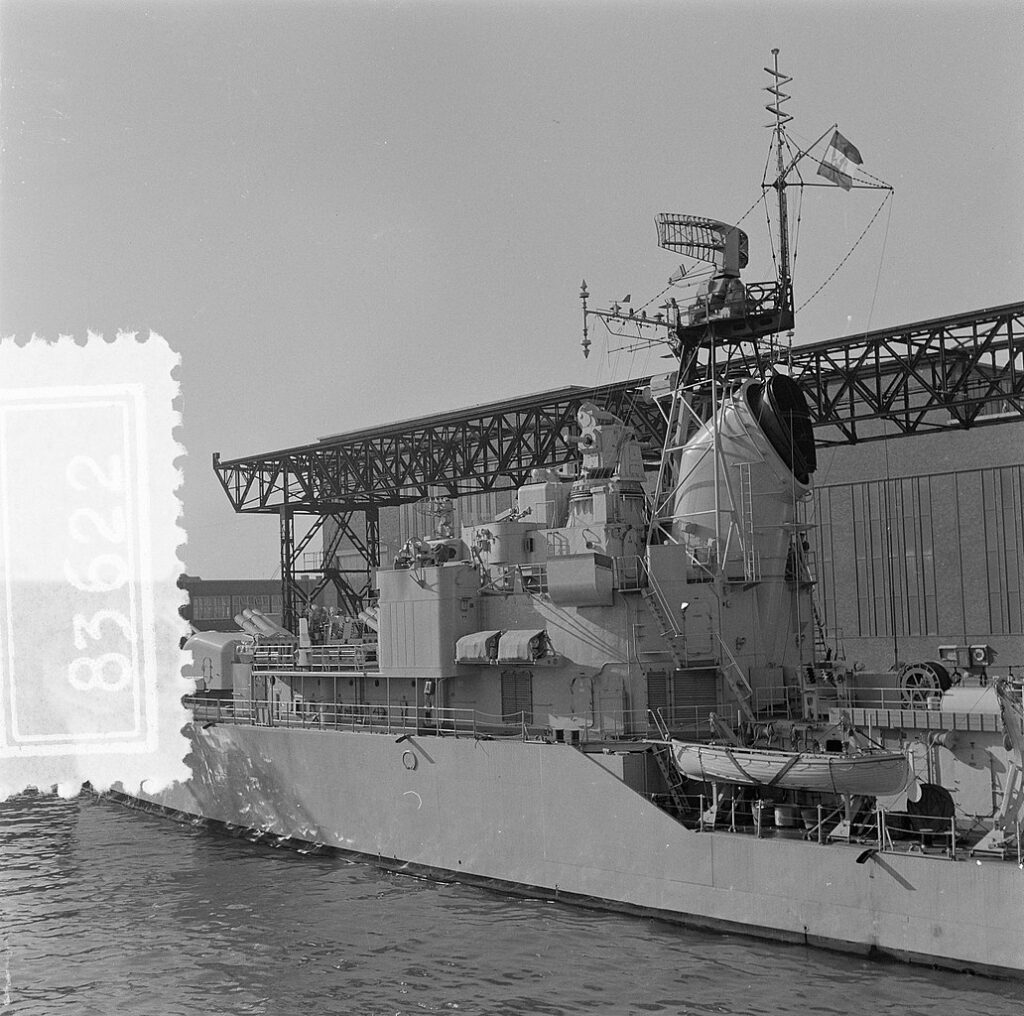
Like the previous Holland class, the Frieslands mixed “old school” features like the classic forecastle destroyer hull of prewar designs, and still practiced by the Royal Navy and Marine Nationale instead of opting for new flush deck hulls liked by the USN, Soviet Navy and Bundesmarine. They also had distinctive superstructure and funnels looking like prewar designs, but with new mast integrations. The structures were all made in aluminium to spare weight, keep stability and speed based on a the same narrow ratio of 1/10 as older destroyer designs. The bridge however was well developed and shared like the Holland class a set of portholes instead of classic squared windows better suited for the rough seas conditions of the North Atlantic and North sea, in front of the Skagerrak, as per their NATO assignations. The Friesland class had a more extensive crew compared to the Holland class, 284 officers and ratings versus 274.
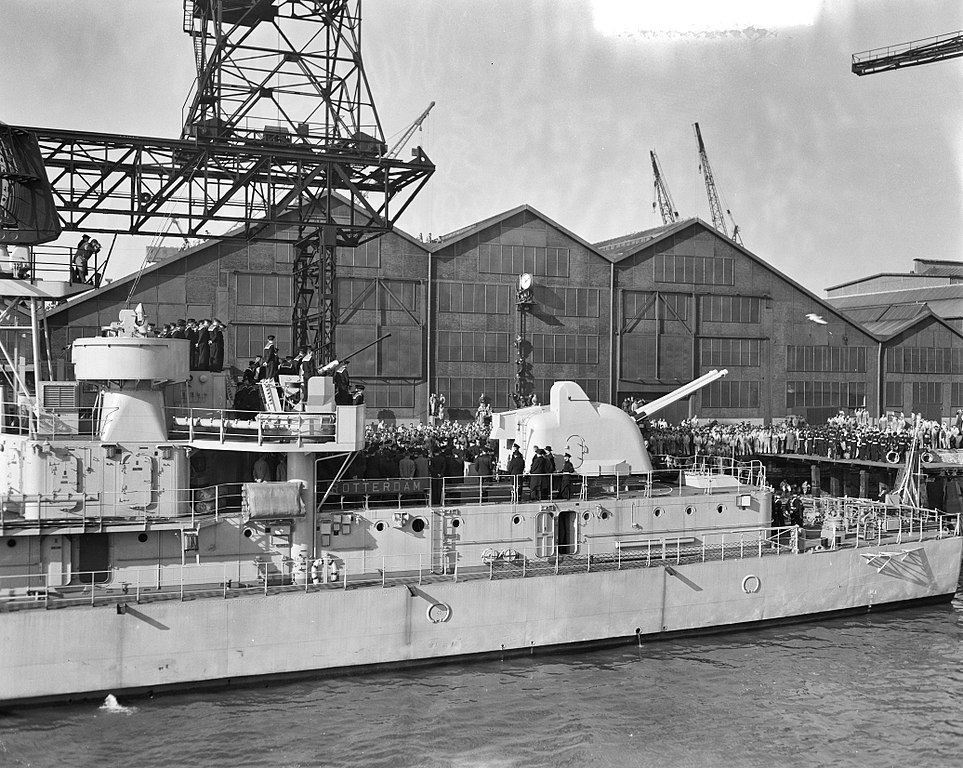
Powerplant
The Friesland class destroyers were equipped with two boiler rooms and two engine rooms. Both boiler rooms were equipped with two Babcock & Wilcox boilers with controllable superheater fireboxes. From an economic point of view, sailing took place in one boiler room. Their machinery being very close to the Gearing class, their boilers delivered super-heated steam and worked at 620psi. The engine rooms were equipped with high and low pressure turbines and a switchable cruise turbine for economical sailing. Total output was 60,000 hp, way more than for the prewar engines of the Holland class, resulting in a design speed of 36 knots (nautical miles/hour), but in practice on trials, nearly all units could reach 42 knots. This was seen as an advantage even ten years after their construction as from 1959 onwards, the Sopviet Union started to deploy nuclear powered attack submarines believed to be by NATO above 30 knots underwater, such as the November class.
Armament
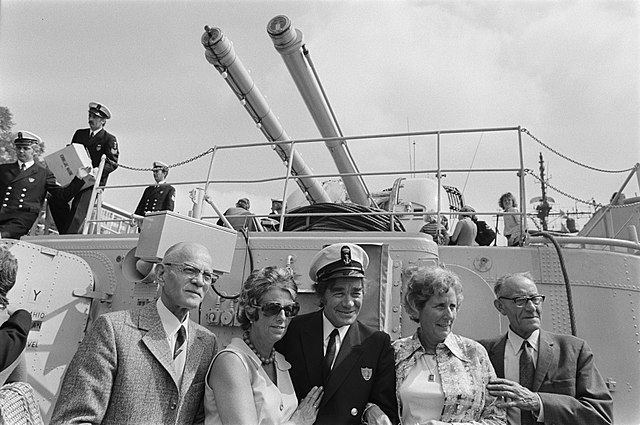
The armament consisted of four 12 centimeter guns (in two twin turrets), four 40mm machine guns, two rocket depth charge launchers (with four launch tubes each) for the bridge and a depth charge rack on the half deck. Originally, six 40mm machine guns were placed, but this load was too great: the ships tore behind the front chimney. The Utrecht and Overijssel were equipped with eight torpedo launch tubes in 1960 and 1961, in two positions on both sides amidships. These were later removed again. Above the galley was a light rocket launcher. Although equipped with radar, this system was still used for night firing.
Main 2×2 Bofors 120 mm/50
The Bofors 120 mm (4.7 in) Naval Automatic Gun L/50 or model 1950 was the first heavy twin-barreled fully automatic dual purpose naval gun turret system by Bofors. It was worked out already during WW2 as a private venture, and was relaiunched after a request by the Netherlands Navy in 1948. Development really went to fruition in 1951-54. The Swedish navy also adopted it.
In all, 720 rounds were stored per mounting in the hull below.
⚙ specifications Bofors 120 mm/50 |
|
| Weight | 67,000 kg (148,000 lb) |
| Elevation | -9°/+85°, 25°/s, traverse 360 at 22°/sec. |
| Loading system | Automatic extraction with integrated autoloader |
| Muzzle velocity | 835–850 m/s (2,740–2,790 ft/s) |
| Range | c12,000m |
| Guidance | Fire Control Radar |
| Crew | 2 (control) |
| Round | 120 × 835 mm R 23.35 – 23.5 kg |
| Rate of Fire | 2× 42 rounds/min |
AA: 6x Bofors 40 mm Automatic Gun L/70
The close-range anti-aircraft armament started with six Bofors, all single. At the end of their career it was reduced to just one single Bofors 40 mm gun to regain stability.
The L/70 was a longer barrel, dual feed variant of the famous wartime L/60 classic Bofors, probably the best naval AA gun of the war. They were installed on the wings amidships between funnels and the last pair aft, on the superstructure.
Specs: 0.96 kg (2.1 lb) 40 × 365 mm R shell. 240, 300, 330 rpm, Mv 1,000 m/s (3,300 ft/s) range 12,500 m (41,000 ft), fed by 16–26 round hoppe
ASW
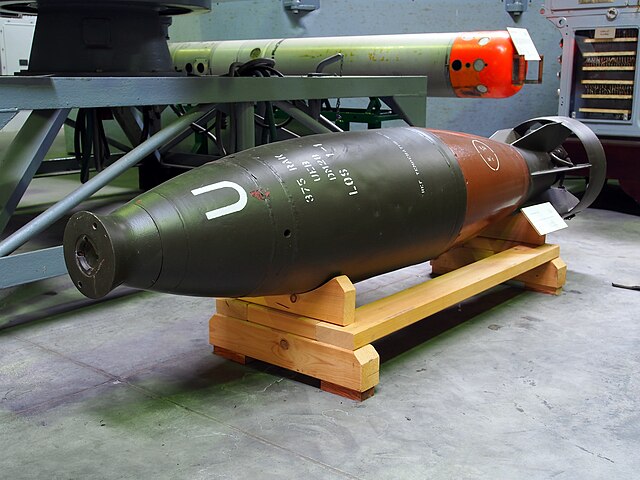
The Anti-submarine weaponry comprised two quadruple Bofors 357 mm anti-submarine mortars placed in superfiring ‘B’ forward of the bridge, where another twin turret coukld have been. They offered a wide fire arc and could fire eight heavy depht charge, fused at a distance. These 14.8 in rockets used solid fuel, and had a max range of 3,625 m (11,893 ft), carrying a heavy Warhead High explosive, exploding using an Acoustic Proximity Fuse. A pupular model it was also used by Sweden and France under licence and others navies.
This was completed by two depht charge racks at the stern.
Sensors
The radars aboard were designed by Hollandse Signaal Apparaten. The suite comprised the following:
-Radar LW-02 surface warning, improved ZW-01
-Radar DA-01 for medium range surveillance, close to DA-02 on Holland class
-Radar ZW-01, later LW-02 for long range surveillance
-Radar M45 fire control main artillery
-Hull Sonar Type PAE 1N (same as Holland class)
-Hull Sonar Type CWE 10 (same as Holland class)
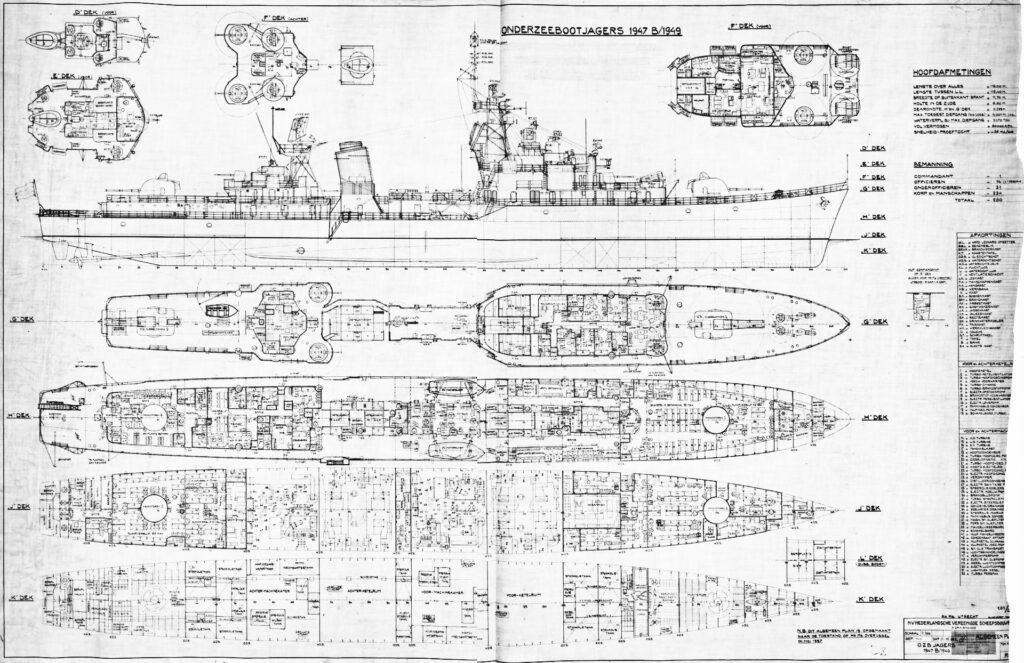
Original plans of the Type 47B or Type 49
⚙ Friesland class specifications |
|
| Displacement | 2,497 tons standard, 3,070 tons full load |
| Dimensions | 116 x 11.7 x 5.2m (381 ft x 38 ft x 17 ft) |
| Propulsion | 2 shaft geared turbines, 4 BW boilers SH steam 620psi, 60,000 hp |
| Speed | 36 kn (67 km/h; 41 mph) |
| Range | 4,000 nmi (7,400 km; 4,600 mi) at 18 kn (33 km/h; 21 mph) |
| Armament | 2×2 Bofors 120 mm, 6× 40mm Bofors AA, 2×4 Bofors 375 mm ASWRL, 2x DCR |
| Sensors | Radar LW-02, DA-01, ZW-01, M45, Sonar Type PAE 1N, Type CWE 10 |
| Crew | 284 |
Read More/Src
Books
Conway’s All the World’s Fighting Ships 1947-1995
W.H.E., van Amstel (1991). De schepen van de Koninklijke Marine vanaf 1945. Alkmaar: De Alk. ISBN 9060139976.
Mark, Chris (2005). Onderzeebootjagers van de Holland- en Friesland-klasse. Amsterdam: Stichting Vrienden van de Koninklijke Marine. ISBN 9051230044.
Mark, Chris (2006). De geschiedenis van Hr. Ms. Drenthe. Amsterdam: Stichting Vrienden van de Koninklijke Marine.
Jordan, John (2016), Warship 2016. Conway, London
Hank Visser, The Netherlands type 47A destroyer in Warship 2016 Conway’s Maritime Press pp182-185
Amstel, W.H.E. van (1991). De schepen van de Koninklijke Marine vanaf 1945. Alkmaar: De Alk.
Brobbel, Henk (2008). Hr. Ms. Holland: de parel van het eskader. Soest: Boekscout VOF.
Moens, J.; Muller, W.; Bernhard, R. (1970). D810: Hr.Ms. Noord-Brabant.
Mark, Chris (2005). Onderzeebootjagers van de Holland- en Friesland-klasse. Amsterdam: Stichting Vrienden van de Koninklijke Marine.
Schoonoord, D.C.L. (2012). Pugno Pro Patria: De Koninklijke Marine tijdens de Koude Oorlog. Van Wijnen-Franeker.
Gerretse, K.H.L.; Wijn, J.J.A. (1993). Drie-cylinders duiken dieper: de onderzeeboten van de dolfijn-klasse van de Koninklijke Marine. Amsterdam.
Links
marineschepen.nl/
maritiemnederland.com/ onderzeeboten
marineschepen.nl/
marineschepen.nl/
http://www.navyinside.nl/ onderzeebootjagers
navypedia.org
nl.wikipedia.org/ Frieslandklasse
commons.wikimedia.org
 Friesland
Friesland
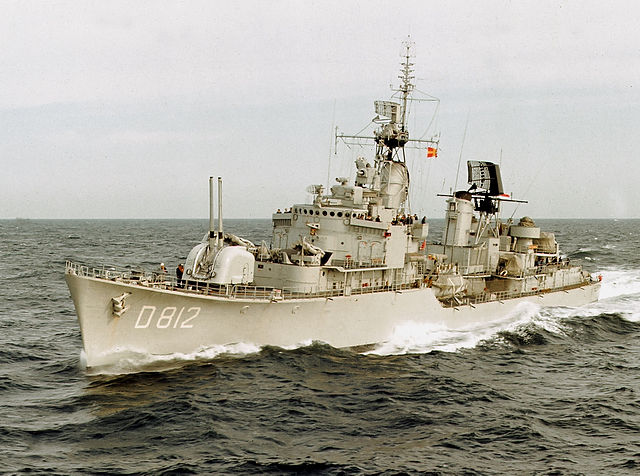
Hr.Ms. Friesland was built in NDSM Amsterdam, laid down on December 17, 1951, launched on February 21, 1953, commissioned on March 22, 1956. In July she sailed with HNLMS Zeeland and the cruiser HNLMS Zeven Provincien to Leningrad, a first since 1914. There were festivities related to Peter the Great that spent a while in Dutch yards trying to setup a Russian fleet and own shipyards. At Kronstadt they were officially welcomed by Soviet authorities. In 1962, she departed for a campaign in the Indonesia-New Guinea conflict, preventing an Indonesian landing on theisland of Misool, part of Dutch New Guinea. No records for the rest of her careeer. She was decommissioned on June 29, 1979 but not sold to Peru and scrapped instead.
 Groningen
Groningen
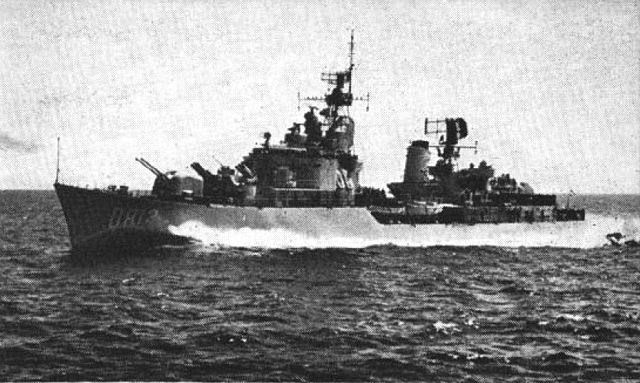
Hr.Ms. Groningen was built in NDSM Amsterdam, laid down on February 21, 1952, launched on January 9, 1954, commissioned on September 12, 1956. No detailed career records. On July 7, 1977, along with HNLMS. Overijssel frigate Hr.Ms. Tromp plus the supply oiler HNLMS. North Star were in delegation visiting Leningrad for the first and last time since 21 years ago. She was decommissioned on January 20, 1981, and then sold to the Peruvian Navy, recommissioned on March 2, 1981 as BAP Gálvez, decommissioned again on in 1991.
 Limburg
Limburg
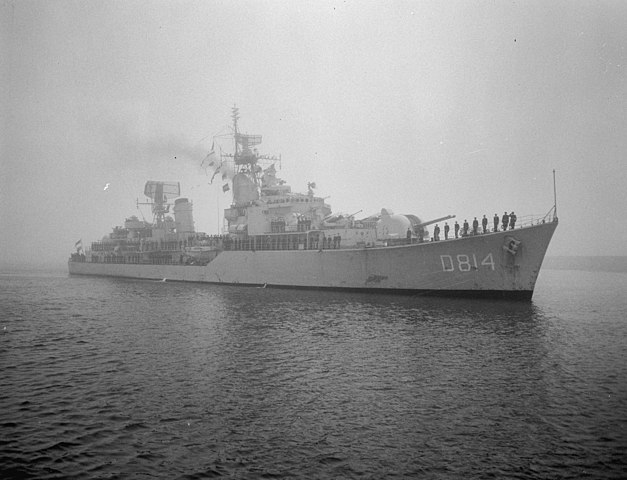
Hr.Ms. Limburg was built in Vlissingen, Koninklijke Maatschappij (de Schelde), laid down on November 28, 1953, launched on September 5, 1955, commissioned by October 31, 1956. In 1962 she took part in the with the post-colonial Indonesian and New Guinea campaign, and notably she repelled Indonesian aircraft attacks. She was decommissioned on February 1, 1980, sold to the Peruvian Navy adn recommissioned on June 27, 1980 as Capitan Quiñones, then decommissioned in 1991.
 Overijssel
Overijssel
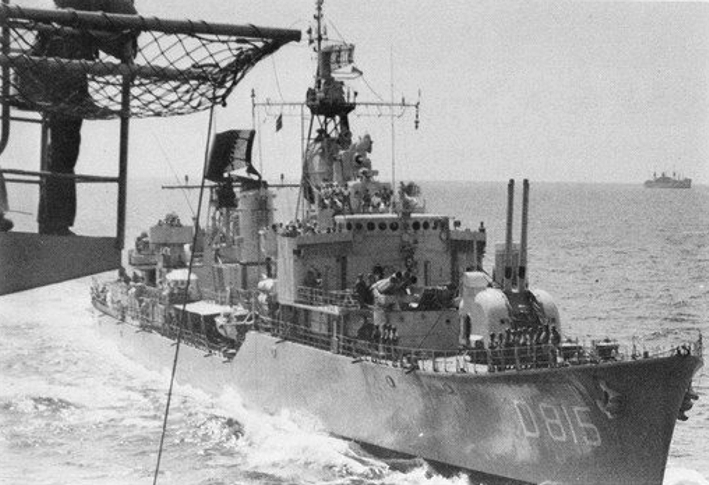
Hr.Ms. Overijssel (D 815) was another Type 57B class and tenth ship to be named after the Dutch province. On July 1, 1958, she left Den Helder for Dutch New Guinea via the Suez Canal and Singapore, reaching reached Sorong on August 7, 1958. In November 1959 she was back to Den Helder. In 1962, Overijssel returned for another campaign in Dutch New Guinea. After the signing of the New York Agreement, she sailed the Sorong-Biak route back and forth among other things to carry army troops. On November 15, 1962 she was the last Dutch ship to leave Biak for Den Helder via Singapore, she also stopped at Kochi (India), Djibouti (French Somaliland) and Gibraltar. The route from Biak to Singapore was closed through the now hostile Indonesian archipelago, so she went around Borneo and under the Philippines at high speed and closely monitor all along by Indonesian aircraft. On December 20, 1962, Overijssel arrived in Den Helder with 32 marines on board. She was decommissioned in 1982, and sold to the Peruvian Navy as Bolognesi on July 15, 1982, then withdrawn from service after a few years.
 Drenthe
Drenthe
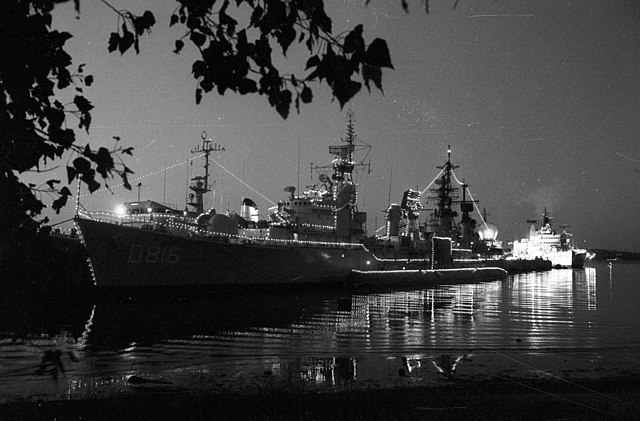
Hr.Ms. Drenthe was built in Amsterdam, started on January 9, 1954, launched on March 26, 1955 and commissioned on August 1, 1957. No detailed records. On November 12, 1980, a fire broke out as some of the crew tried to burn crypto paper in her boilers while underway to Curaçao to relieve her sister ship Rotterdam as station ship. Badly damaged by firen with two dead, she was towed to port for initial repairs, and she returned to home only to be discarded, and decommissioned on November 24, 1980, sold to the Peruvian Navy, recommissioned on June 3, 1981 as Guise and decommissioned for good on 1985, scrapped.
 Utrecht
Utrecht
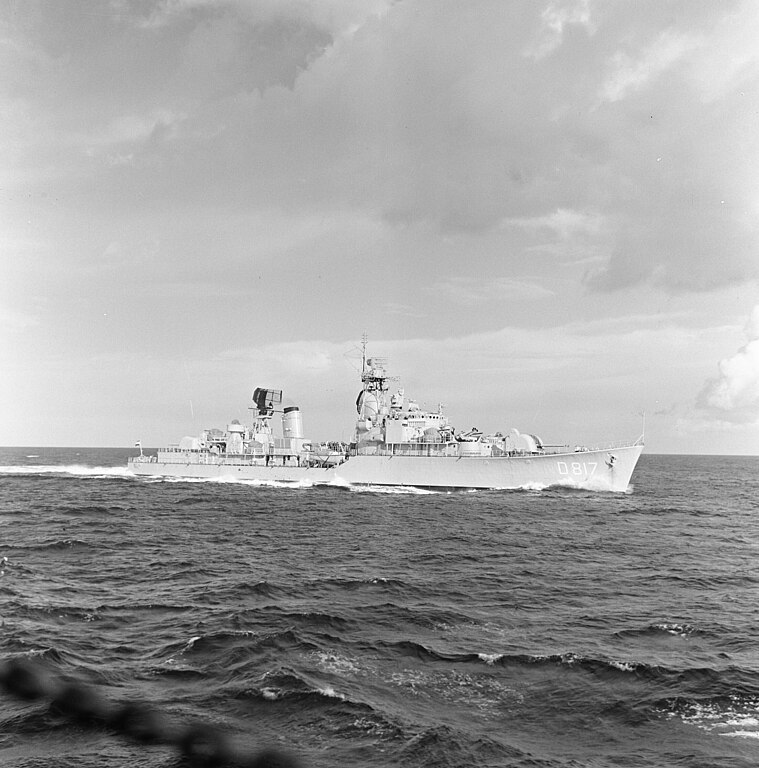
Hr.Ms. Utrecht (D 817) was built under construction number 272 at Royal Maatschappij De Schelde in Vlissingen (call sign PAEY) and eighteenth named after the province; She was laid down on February 15, 1954, launched on June 2, 1956, commissioned on October 1, 1957. She is the only one for which full logs had been made public, hence her detailed career. After training she made her shkedown cruise to the Mediterranean by February 1958, stopping en route to Naples, Barçelona and Gibraltar. She was assigned to the 1st Squadron 1 by the fall of 1958, NATO Channel Squadron from April 1959 and took part in exercise Fairwind 4 by early June 1959.
From January 14, 1961, Hr. Ms. Utrecht was prepared for her campaign in Dutch New Guinea and join Hr.Ms. Amsterdam (D 819), on her way to the Suez Canal, Mauritius and Fremantle, arriving off Sorong on March 11. From 1961 she regularly patrolled north and south coasts, cut by R&R and supplies in Hong Kong, started in October. She was off Biak by November 1961, but the next year, tensions in the ‘konfrontasi’ increased and she was now patrolling with Hr.Ms. Evertsen (F 803) and Hr. Ms. Kortenaer (F 812) most often along the south coast. During one of the last patrols she intercepted a prao (a local catamaran like vessel) with twenty insurgents aboard was stopped near Fak-Fak on May 14, 1962. The destrtoyer was scheduled to return home from May 31, but this was postponed and by June 25, 1962, she departed from Hollandia back home at last via Hawaii, San Diego, Panama, Curaçao and the Azores to avoid the Indonesian route. On August 10, 1962, she was back in Den Helder.
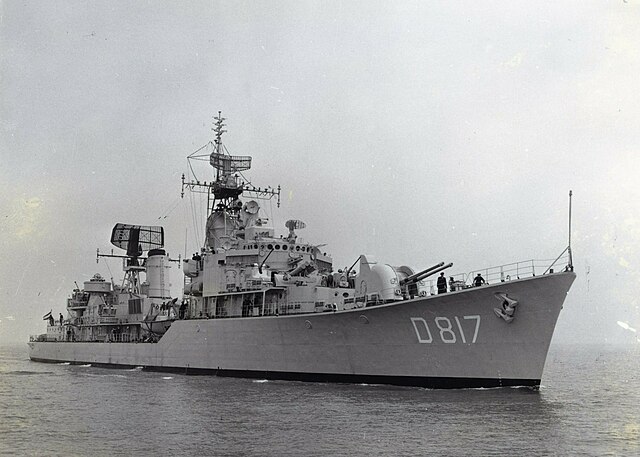
After major maintenance, she was back in service in early 1963, reassigned to Squadron 1. By the end of 1965, she entered the reserve fleet until June 23, 1971. She had been converted to burn diesel oil instead of fuel oil and from July to the end of December she made sea trials for the rest of the class, combustion and endurance tests in the North Sea, also circumnavigating Great Britain, stopping en route at Newcastle upon Tyne and Dublin. By the 1970s, she rotated as station ship in Curaçao, visiting yearly many ports in the Caribbean. In 1973, she msde an eight months patrol from April 18, 1973 at Willemstad in Curaçao and back home by December 1973, returning to NATO duties by early 1974. While in Portland she collided with British tanker RFA Tideflow while making her resupply at sea by the end of January 1975. She merrely bumped her so after emergency repairs at sea this was completed in Den Helder and she was prepared for her second “Westterm” or Curaçao delployment from April to May 1975 back to Willemstad.
Back home she went under a long refit and maintenance over a year until August 26, 1977. She resumed her NATO duties, making her third “Western” in 1978. Back to the Rima jetty, Parera Naval Base on Curaçao after a courtesy visit to St. Lucia she sustains damage to her starboard propeller and was repaired at the Beatrix dock in Curaçao. By November 1978, she left Willemstad for the last time back to Den Helder, resuming its normal duties. In February 1980, she made her last trip to the Mediterranean sailing notably with Hr.Ms. Callenburgh (F 808) and Hr.Ms. Rotterdam (D 818) to Barçelona and decommissioned on August 1, 1980. She was later sold to Peru by September 5, 1980, recommissioned on October 6, 1980 as BAP Castilla and decommissioned agains in 1990, used as spare parts reserve ship to keep her sisters in service. She was scrapped in 1997 at Ventanilla Bay, north of Callao.
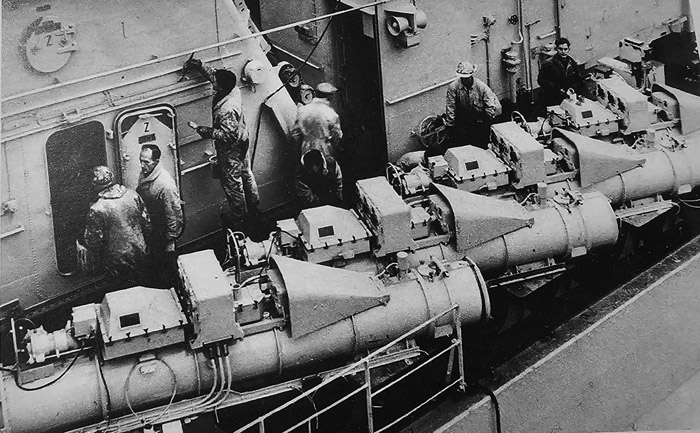
Torpedo launch tubes on the D 817
Hr. Ms. Utrecht was the only ship to have torpedo tubes in her class. She carried four indovidual tubes on the port and starboard sides amidships. They were launching the British Mk 20 torpedo, after the type was already tested on Hr. Ms. Mercuur. After these tests, eight tubes were manufactured at Rijkswerf, Den Helder, the installed by mid-1959 on Hr.Ms. Utrecht. In 1961, after they were tested many times, the admiralty decided against adoption the armament and they were dismantled in Biak no long after her arrival in Dutch New Guinea. The admiralty wanted indeed to test but American torpedoes instead with triple standard MK 32 launchers, installed on new ships with the MK 44 (electrically active/passive) homing torpedo, and later the MK 46 equipped with the Otto engine.
 Rotterdam
Rotterdam
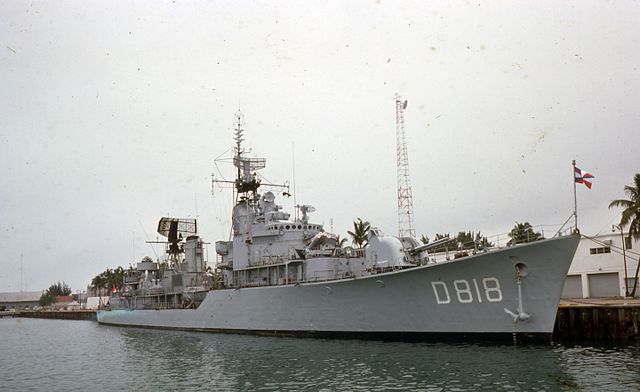
Hr.Ms. Rotterdam was built in Rotterdam by Rotterdamsche Droogdok Maatschappij, laid down on January 7, 1954, launched on January 26, 1956 and commissioned on February 28, 1957. No service records. On November 12, 1980, a fire broke out on HNLMS Drenthe when brurning papers in her boilers while on its way to Curaçao to relieve Rotterdam as station ship. Rotterdam towed back to the port. Two crew members died in the fire. On May 15, 1981, Rotterdam was decommissioned, sold to the Peruvian Navy, recommissioned by June 29, 1981 as Diez Canseco and she was in service until 1991.
 Amsterdam
Amsterdam
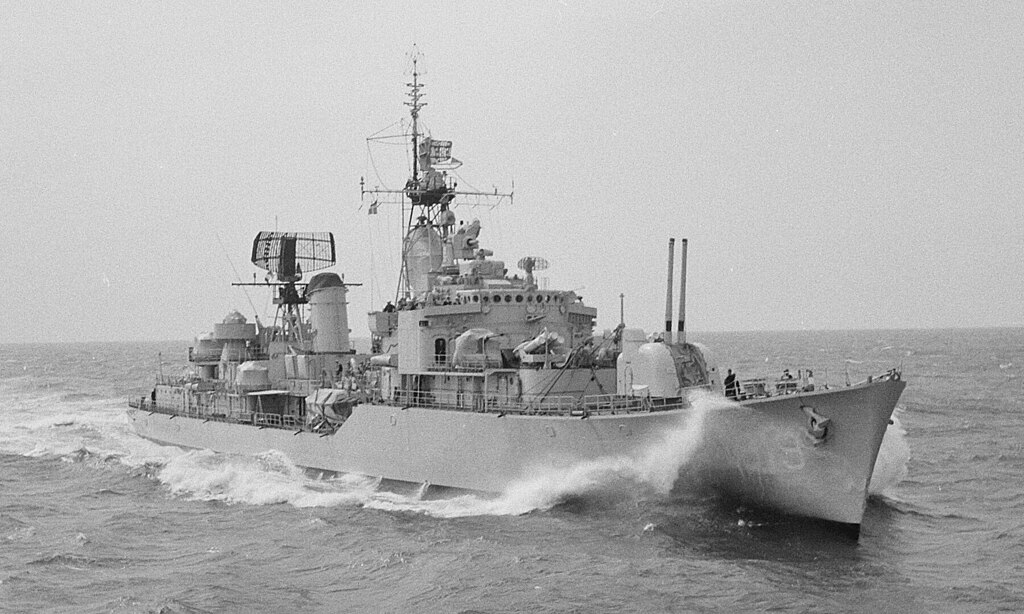
The Hr.Ms. Amsterdam (D819) was built by the NDSM in Amsterdam part pof the original order of 12 submarine chasers, Type 57b, or Friesland class (from 1956). No service record found yet. In 1980, she was sold to the Peruvian Navy, where she served under the name “Villar” until 1991.


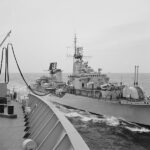
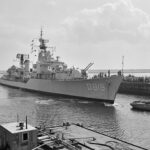
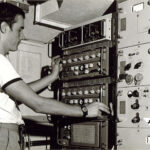

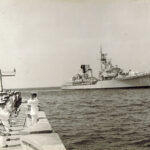
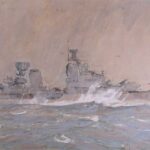
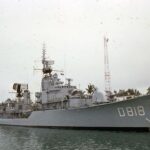
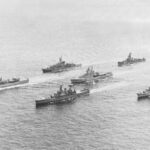
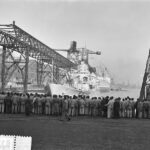
 Latest Facebook Entry -
Latest Facebook Entry -  X(Tweeter) Naval Encyclopedia's deck archive
X(Tweeter) Naval Encyclopedia's deck archive Instagram (@navalencyc)
Instagram (@navalencyc)





 Austrian Navy
Austrian Navy French Navy
French Navy Royal Navy
Royal Navy Armada Espanola
Armada Espanola K.u.K. Kriegsmarine
K.u.K. Kriegsmarine Dansk Marine
Dansk Marine Nautiko Hellenon
Nautiko Hellenon Koninklije Marine 1870
Koninklije Marine 1870 Marinha do Brasil
Marinha do Brasil Osmanlı Donanması
Osmanlı Donanması Marina Do Peru
Marina Do Peru Marinha do Portugal
Marinha do Portugal Regia Marina 1870
Regia Marina 1870 Nihhon Kaigun 1870
Nihhon Kaigun 1870 Preußische Marine 1870
Preußische Marine 1870 Russkiy Flot 1870
Russkiy Flot 1870 Svenska marinen
Svenska marinen Søværnet
Søværnet Union Navy
Union Navy Confederate Navy
Confederate Navy Armada de Argentina
Armada de Argentina Imperial Chinese Navy
Imperial Chinese Navy Marinha do Portugal
Marinha do Portugal Mexico
Mexico Kaiserliche Marine
Kaiserliche Marine 1898 US Navy
1898 US Navy Russkiy Flot
Russkiy Flot French Naval Aviation
French Naval Aviation Russian Naval Aviation
Russian Naval Aviation Sovietskiy Flot
Sovietskiy Flot Royal Canadian Navy
Royal Canadian Navy Royal Australian Navy
Royal Australian Navy RNZN Fleet
RNZN Fleet Chinese Navy 1937
Chinese Navy 1937 Kriegsmarine
Kriegsmarine Chilean Navy
Chilean Navy Danish Navy
Danish Navy Finnish Navy
Finnish Navy Hellenic Navy
Hellenic Navy Polish Navy
Polish Navy Romanian Navy
Romanian Navy Turkish Navy
Turkish Navy Royal Yugoslav Navy
Royal Yugoslav Navy Royal Thai Navy
Royal Thai Navy Minor Navies
Minor Navies Albania
Albania Austria
Austria Belgium
Belgium Columbia
Columbia Costa Rica
Costa Rica Cuba
Cuba Czechoslovakia
Czechoslovakia Dominican Republic
Dominican Republic Haiti
Haiti Hungary
Hungary Honduras
Honduras Estonia
Estonia Iceland
Iceland Eire
Eire Equador
Equador Iran
Iran Iraq
Iraq Latvia
Latvia Liberia
Liberia Lithuania
Lithuania Mandchukuo
Mandchukuo Morocco
Morocco Nicaragua
Nicaragua Persia
Persia San Salvador
San Salvador Sarawak
Sarawak Uruguay
Uruguay Venezuela
Venezuela Zanzibar
Zanzibar Warsaw Pact Navies
Warsaw Pact Navies Bulgaria
Bulgaria Hungary
Hungary

 Bundesmarine
Bundesmarine Dutch Navy
Dutch Navy Hellenic Navy
Hellenic Navy Marina Militare
Marina Militare Taiwanese Navy
Taiwanese Navy Chinese Navy
Chinese Navy Indian Navy
Indian Navy Indonesian Navy
Indonesian Navy JMSDF
JMSDF North Korean Navy
North Korean Navy Philippines Navy
Philippines Navy ROKN
ROKN IDF Navy
IDF Navy Royal New Zealand Navy
Royal New Zealand Navy Egyptian Navy
Egyptian Navy South African Navy
South African Navy

































 RN
RN
 Marine Nationale
Marine Nationale
 Soviet Navy
Soviet Navy
 dbodesign
dbodesign